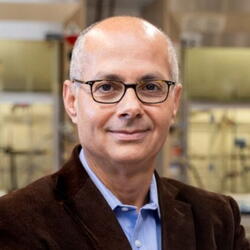
The Department of Chemistry has been a part of the University of Illinois since the university’s beginning in 1868. By the 1920s, the department was one of the largest in the United States in terms of facilities, faculty, and degrees granted. It counts 12 Nobel Prize winners among its graduates, postdocs, or faculty. Below is a list of these Nobel Prize Winners arranged chronologically.
Edward A. Doisy (1893 - 1986) 
Doisy received his BS in 1914 and his MS in 1916 in chemistry from the University of Illinois. He went on to complete his PhD in 1920 from Harvard University. He was awarded a Nobel Prize in Physiology or Medicine, along with Henrik Dan in 1943 for their discovery of the antihemorrhagic vitamin K. He also isolated estrone and improved methods for isolation and identification of insulin.
Wendell M. Stanley (1904 – 1971) 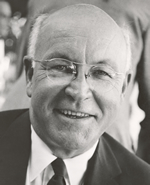
With no thought of extending his education in chemistry, Stanley met organic chemist, Roger Adams, who convinced him to do research in his laboratory. He earned his PhD in chemistry in 1929 from the University of Illinois. Seventeen years later he was awarded the Nobel Prize in Chemistry (1946) for his research on the isolation of a nucleoprotein that displayed tobacco mosaic virus activity. During WW II he helped to develop influenza vaccines. He evolved from being an organic chemist to a virologist, ultimately conceiving of and chairing the Dept. of Virology at the University of California at Berkeley.
Vincent du Vigneaud (1901 – 1978) 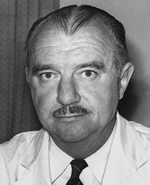
Vincent du Vigneaud received his BS in chemistry in 1923 then his MS in 1924 from the University of Illinois. He was impressed with C. S. Marvel and did both his bachelor’s and master’s research with him. After earning a PhD in 1927 from the University of Rochester and working in various postdoctoral positions, he returned as a faculty member to the University of Illinois in 1929, staying until 1932. He received the Nobel Prize in Chemistry in 1955 "for his work on biochemically important sulphur compounds, especially for the first synthesis of a polypeptide hormone".
Robert W. Holley (1922 – 1993) 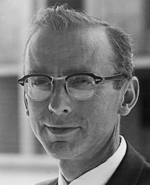
Holley earned an AB in chemistry from the University of Illinois in 1942, then obtained a PhD from Cornell University in 1947. During some of his time at Cornell he worked with Vincent du Vigneaud to synthesize penicillin for the war effort. He held various positions at Cornell University and also at the University of California, San Diego though the years. Holley and his co-workers were the first to completely sequence a nucleic acid (the transfer RNA that binds the amino acid alanine). The 1968 Nobel Prize in Physiology or Medicine was awarded jointly to Robert W. Holley, Har Gobind Khorana and Marshall W. Nirenberg "for their interpretation of the genetic code and its function in protein synthesis".
Elias James Corey (1928 - ) 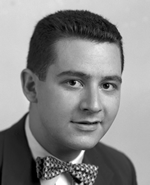
Corey earned his PhD degree from MIT in 1951 and was a chemistry professor at the University of Illinois from 1950 to 1959. He received the Nobel Prize in Chemistry in 1990 "for his development of the theory and methodology of organic synthesis". He is particularly known for popularizing the concept of retrosynthetic analysis in which the synthesis of a complex organic molecule is designed by conceptually working backward from the full molecule, breaking one bond at a time, until the one reaches a set of simple starting materials that can be assembled, working forward, into the target compound by known reactions.
Edwin G. Krebs (1918 – 2009) 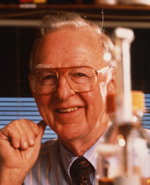
Krebs received foundations in chemistry by earning an AB in chemistry from the University of Illinois in 1940. He then continued at Washington University and received his MD. Subsequently, he did active duty in the Navy. He left the medical profession and became a postdoc with Carl and Gerty Cori in St. Louis, then accepted a position as assistant professor at the University of Washington. In 1992, he and his colleague Edmond Fisher received a Nobel Prize in Medicine and Physiology for their discovery of reversible protein phosphorylation.
Rudolph A. Marcus (1923 - ) 
After obtaining his PhD degree from McGill University in 1946, Marcus worked at the Polytechnic Institute of Brooklyn and then moved to the University of Illinois, where he was a chemistry faculty member from 1964 to 1978. He was awarded the Nobel Prize in Chemistry in 1992 "for his contributions to the theory of electron transfer reactions in chemical systems". His theory, now known as Marcus theory, provides a thermodynamic and kinetic framework for describing one electron outer-sphere electron transfer reactions, such as those that operate in the biochemical processes of respiration and photosynthesis.
Phillip A. Sharp (1944 - ) 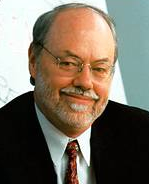
Sharp obtained his PhD in 1969 in chemistry from the University of Illinois. His advisor was Victor Bloomfield. He did a postdoctoral fellowship at the California Institute of Technology, and later was a research scientist at Cold Spring Harbor Laboratory. He is presently a professor at the Koch Institute for Integrative Cancer Research at MIT. In 1993, he and Richard Roberts were awarded the Nobel Prize in Physiology or Medicine for their work on split genes and RNA splicing, one of the fundamental mechanisms involved in protein diversity and evolution.
Martin Rodbell (1925 – 1998) 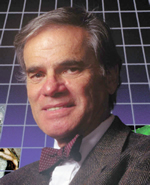
Rodbell was a postdoctoral fellow in chemistry at the University of Illinois in 1954 after earning his PhD from the University of Washington with Donald J. Hanahan. Dr. Hanahan received his BS, MS and PhD in chemistry from the University of Illinois. Dr. Rodbell joined the staff of the National Institutes of Health in 1956. He and Alfred Gilman were awarded the Nobel Prize in Physiology or Medicine in 1994 for "their discovery of G-proteins and the role of these proteins in signal transduction in cells."
Paul C. Lauterbur (1929 – 2007) 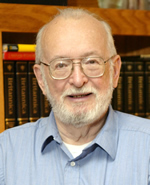
Lauterbur received his PhD in chemistry from the University of Pittsburgh in 1962, after a few detours to work for Dow Corning and being drafted into the Army. He was able to continue NMR research while in the Army and published 4 papers during his enlistment. He then accepted a professorship at the University of New York at Stoney Brook. In 1985, he became a professor at the University of Illinois. He and Peter Mansfield were awarded the Nobel Prize in Physiology or Medicine in 2003 "for their discoveries concerning magnetic resonance imaging".
Martin Karplus (1930 – 2024) 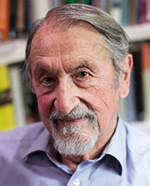
After completing his PhD with Linus Pauling at Caltech in 1953 and doing a postdoctoral fellowship at the University of Oxford, Karplus became a researcher and lecturer at the University of Illinois from 1955 to 1960. While at the University of Illinois, he conducted important Nuclear Magnetic Resonance research. Martin Karplus, Michael Levitt and Arieh Warshel received the 2013 Nobel Prize in Chemistry for "the development of multiscale models for complex chemical systems". LAS article.
Omar Yaghi (1965 – )

Yaghi received his PhD in chemistry at the University of Illinois Urbana-Champaign in 1990 under the advisement of Professor Walter G. Klemperer. Since 2012 Yaghi has been professor of chemistry at the University of California, Berkeley, and a Senior Faculty Scientist at Lawrence Berkeley National Laboratory. In 2025, Yaghi was awarded the Nobel Prize in Chemistry along with Susumu Kitagawa, Kyoto University, Japan, and Richard Robson, University of Melbourne, Australia “for the development of metal–organic frameworks”.
Yaghi, Kitagawa, and Robson created molecular constructions with large spaces through which gases and other chemicals can flow. These constructions, metal–organic frameworks, can be used to harvest water from desert air, capture carbon dioxide, store toxic gases or catalyze chemical reactions. Yaghi's work encompasses the synthesis, structure and properties of inorganic and organic compounds and the design and construction of new crystalline materials. He is widely known for the discovery and for pioneering the development of several extensive classes of new materials: Metal-Organic Frameworks (MOFs), Covalent Organic Frameworks (COFs), and Zeolitic Imidazolate Frameworks (ZIFs).